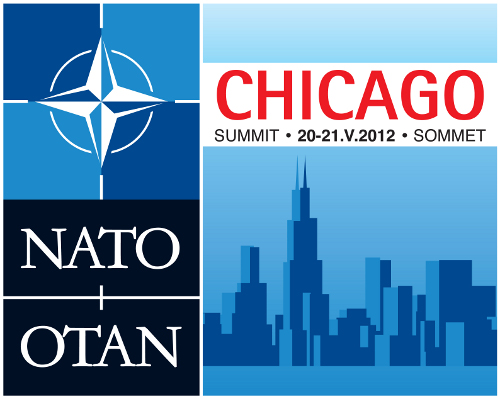
Sixty-three years after the North Atlantic Treaty was signed, binding the United States, Canada, and ten European states to consider an attack on one an attack on all, NATO is transforming itself into a twenty-first-century global security organization. The result will be a safer world.
In 1949, the world was rapidly dividing into two principle political-military blocs, East and West, alongside a large “non-aligned movement.” NATO faced off against the Warsaw Pact, created by the Soviet Union and its allies in 1955. Within both blocs, smaller powers clustered around the superpower. No flexibility existed within either bloc for smaller groups of members to deploy alliance assets.
Today, NATO is becoming, in the words of its secretary-general, Anders Fogh Rasmussen, “a hub of a network of security partnerships and a center for consultation on global security issues.” It is a “globally connected institution,” with more than 40 individual country partners and growing ties to other international organizations.
Indeed, the country partners include all of Europe’s non-NATO countries, such as Austria, Switzerland, Finland, and Sweden, and aspiring and possible NATO members such as Bosnia, Serbia, Macedonia, Ukraine, Belarus, and even Russia. Virtually all of the Central Asian countries – from Turkmenistan to Kazakhstan, as well as Armenia, Azerbaijan, Afghanistan, and Pakistan – are partners, as is the entire Maghreb, from Morocco to Egypt, as well as Israel, Jordan, Iraq, Bahrain, Qatar, Kuwait, and the United Arab Emirates. Finally, Pacific partners include Japan, South Korea, Australia, New Zealand, and Mongolia.
On the organizational side, NATO describes itself as having developed “close working relations” with the United Nations, the European Union, and the Organization for Security and Cooperation in Europe. It also collaborates regularly with the African Union, the International Committee of the Red Cross, the International Organization for Migration, the World Bank, the International Civil Aviation Organization, and the Organization for the Prohibition of Chemical Weapons.
If one draws links radiating outward from NATO to all of these different countries and organizations, the result is a security network that has multiple hubs and clusters – much like a map of the Internet or of planets and galaxies. This world is no longer unipolar, bipolar, or even multipolar, because the actors that matter are not single states but groups of states that are more or less densely connected. It is a multi-hub security network, in which the hubs are regional organizations of different sizes and strengths.
This structural shift has enormous practical significance. For starters, it means that not only NATO’s military resources, but also its human capital and practical knowledge in combating many different kinds of threats are available globally. NATO has created a Comprehensive Crisis and Operations Management Center that brings together civilian and military expertise on crisis identification, planning, operations, reconstruction, and stabilization capabilities in ways that are explicitly designed to connect NATO headquarters in Europe to “the networked world.”
Second, NATO’s own identity is becoming that of an alliance that exists to empower – to offer assistance and partnership – as much as to overpower. NATO is no longer just a hammer; it is an entire toolbox of security options. These options include developing counter-networks to meet networked security threats such as terrorism and proliferation of nuclear, chemical, or biological materials, as well as highly decentralized threats such as piracy. As a result, when a crisis like the war in East Timor in 1999 or last year’s political stalemate in Côte d’Ivoire arises, NATO can backstop whichever country or group of countries chooses to take the lead in carrying out a UN mandate.
NATO members themselves also have much more flexibility to draw on NATO’s collective assets. Even skeptics of NATO expansion and operations like the intervention in Libya now recognize that joint operations by member countries, operating under a UN mandate and in conjunction with regional partners, is likely to be a model for the future. As General Brent Scowcroft, National Security Adviser for President George H.W. Bush, observed recently, the UN Charter originally envisioned a standing military force to enforce Security Council resolutions – a vision that the NATO partner model might ultimately realize.
Power in a network flows from connectedness, or what network theorists call “centrality.” The most powerful member of a network is the node that has the most connections to others, which means that a node can increase its power not only by adding connections directly, but also by increasing the connectedness of nearby nodes.
In other words, the US can increase its own power both by connecting to other NATO members (and then ensuring that NATO is connected to as many other countries and organizations as possible) and by increasing the connectedness of those other countries and organizations. If NATO connects with the African Union, for example, and increases the AU’s connectedness, then both NATO and the AU become more central to the network and hence more powerful in terms of their ability to exercise influence and marshal resources.
The logic of centrality as a source of power creates a virtuous circle, in which members of a network gain advantage by bringing more members into the network and connecting more densely to them. That is exactly the logic behind NATO’s transformation.
The immediate topic on the agenda in Chicago will be getting NATO forces out of Afghanistan. But the longer-term subject will be getting as many countries as possible into the global NATO security network.
Anne-Marie Slaughter, an Atlantic Council Board member, is Dean of the Woodrow Wilson School of Public and International Affairs and the Bert G. Kerstetter ’66 University Professor of Politics and International Affairs at Princeton University. This article was originally published by Project Syndicate, and is part of a series of New Atlanticist pieces on NATO’s 2012 Chicago Summit.
Image: NATO-Chicago-Summit-Logo.jpg
